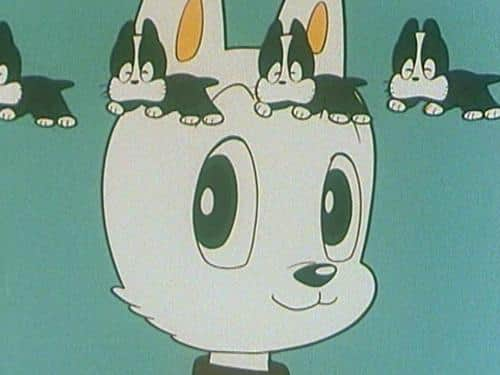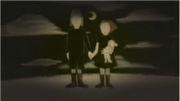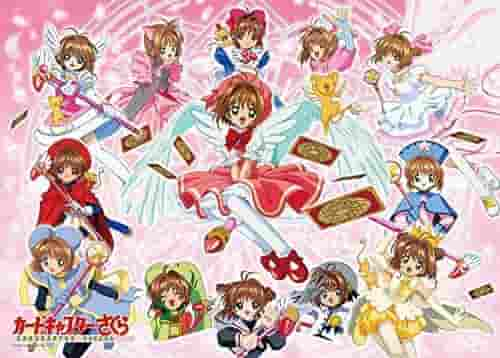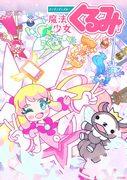The appeal and reputation of Wansa-kun: Rediscovering a nostalgic anime classic

Wansa-kun: Osamu Tezuka's Story of Love and Adventure■ Public MediaTV anime series ■ Original Mediacomics ■ Broadcast periodApril 2, 1973 - September 24, 1973 ■Broadcasting stationKansai Television ■Frequencieshalf an hour ■ Number of EpisodesEpisode 26 ■Original StoryOsamu Tezuka ■ DirectorEiichi Yamamoto ■ ProductionKansai Television, Mushi Production ■Works©1973 Tezuka Productions, Tohokushinsha ■ StoryWansa, a stray mixed breed dog, happens to come across a town where he is picked up by a boy named Kota and is taken in by him. As a pet, Wansa spends busy but fun days getting into trouble with fellow dogs he meets in town and fighting territorial wars with rival cat clans. At the same time, he dreams of one day meeting his mother... ■ExplanationWansa, the main character of this work, was originally designed by Tezuka Osamu as a mascot character for Sanwa Bank (now Mitsubishi Tokyo UFJ Bank). The entire film is played out in a musical style, and human performances were filmed and traced to anthropomorphize the dog's movements, making it a groundbreaking work in both production and technology. In contrast to the comical opening, the ending is full of tragedy, but the metafictional punchline that the whole thing was a play was also very innovative. ■Cast・Wansa/Noriko Obara ・Kota/Masako Nozawa ・Megane/Ichiro Nagai ・Herahera/Hiroshi Otake ・Wansa's mother/Sachiko Chijimatsu ■ Main staff・Original story by Tezuka Osamu・Planning by Nishizaki Yoshinobu, Zuiyo Enterprises・Screenplay by Fujikawa Keisuke, Tamura Maru, Yamamoto Eiichi, Hidaka Jin, Ikeno Fumio・Music by Miyagawa Yasushi・Director by Yamamoto Eiichi・Chief animation directors by Ashida Toyoo, Shindo Mitsuo, Anime Room・Key animation by Ashida Toyoo, Yasuhiko Yoshikazu, Okasako Nobuhiro, Kanayama Akihiro, Ebisawa Yukio, Anime Room, Tama Productions・Direction by Ishiguro Noboru, Asa Minami, Yoshikawa Souji, Hata Masami, Yazawa Norio, Tanaka Minoru・Producer by Nishizaki Yoshinobu・Character design by Nagashima Shinji・Production by Shibayama Tatsuo (Mushi Production), Michihiro Shujiro (Kansai TV), Harada Masuji (episodes 1-8), Sato Hiroshi (episodes 1-8) ■ Main Characters・Wansa is a mixed breed dog with pure white fur. He has a carefree personality and while he longs to meet his mother, he spends his time living a fun and interesting life with his friends. ■Subtitle Episode 1: A strange dog has arrived Episode 2: Let's get married!! Catherine Episode 3: Fly!! Peeing mission Episode 4: Your favorite Benjamin Episode 5: The taste of mommy left in my nose Episode 6: Dig here, Woof Woof Woof Sa-kun Episode 7: Don't throw away Midori-chan Episode 8: A fool can only be cured if he dies (Part 1) Episode 9: A fool can only be cured if he dies Part 2・Episode 10/I'll tell you how a dog dies・Episode 11/It's hard being popular in Bhutan・Episode 12/Pin from Pippin with a Hundred Bones・Episode 13/When the moon rises, the blood rises・Episode 14/Wangsa-kun's Musical Special・Episode 15/Mimi's Kimono Sumida River・Episode 16/The dog is sold and where does it go?・Episode 17/When I fall in love, I can't stop・Episode 18/Sorry for not wearing pants・Episode 19/Wangsa who dances and Wangsa who doesn't dance・Episode 20/I'm a Stray Dog Champion・Episode 21/Wangsa-kun's Musical Special・Episode 22/I want to see my mom!! Part 1 The appeal and reputation of Wansa-kunAmong Tezuka Osamu's works, "Wansa-kun" holds a particularly unique position as a TV anime series that was broadcast in 1973. This work depicts the adventures and growth of Wansa, the protagonist, who Tezuka Osamu designed as a mascot character for Sanwa Bank. Below, we will take a closer look at the appeal and reputation of Wansa-kun. The appeal of the storyThe story of Wansa-kun begins when a stray dog named Wansa is picked up by a boy named Kota and begins a new life as a pet dog. Wansa lives a happy life, despite getting caught up in trouble with fellow dogs and rival cat clans he meets in town. However, he still dreams of meeting his mother. The story, which intertwines these two elements, will provide viewers with both laughter and emotion at the same time. Particularly memorable are the episodes where Wansa's humorous scenes with his friends intersect with his earnest desire to see his mother. For example, in episode 5, "The Taste of Mommy Remains in My Nose," Wansa is depicted chasing after his mother's scent, moving the viewer's heart. Also, in the series "I Want to See Mommy!!" from episodes 22 to 26, Wansa's feelings for his mother reach a climax, leading to a touching conclusion. Innovation in production and technologyWangsa was a highly innovative production in terms of direction and technology. The entire film was presented in musical style, which was very innovative at the time. Also, in order to anthropomorphize the dog's movements, human performances were filmed and traced, which made the movements of Wangsa and other characters more realistic and dynamic. Furthermore, the transition from the comical opening to the tragic final scene was brilliant. The metafictional punchline that the whole thing was a play surprised and moved the audience. This kind of innovative direction and technology makes Wansa-kun a special piece among Osamu Tezuka's works. Character AppealWansa's character is charming with his carefree and bright personality. His pure white fur and adorable expression capture the hearts of viewers. As the story depicts Wansa's adventures and growth, the friendship with his friends and his feelings for his mother are deeply depicted, evoking sympathy from viewers. In addition, the supporting characters such as Kota, Megane, and Herahera are also unique and attractive. In particular, the voice acting of Sachiko Chijimatsu, who played Wansa's mother, touched the hearts of viewers deeply. The story woven by these characters will provide viewers with laughter and tears. The appeal of musicWansa-kun's music is distinctive, composed by Yasuo Miyagawa. It includes many songs that liven up the atmosphere of each episode, such as the opening theme "Wansaka Wansa-kun," "I Want to See Mom," and "Don't Die, Mom." The ending themes "Pinkora Ondo" and "Midori-chan" are also memorable and will remain in the viewers' memories. These songs enrich the story of Wangsa-kun and are important elements that stimulate the emotions of the viewers. In particular, music plays a very important role in this work, which has many musical-like developments. Ratings and RecommendationsWansa-kun is one of the most highly acclaimed works by Osamu Tezuka. It has been highly praised for many elements, including the appeal of the story, the innovative direction and technology, the appeal of the characters, and the appeal of the music. It has also received very positive feedback from viewers, and has a large fan base. The reasons why I recommend this work are as follows:
Wansa-kun is a work that can be enjoyed by both children and adults. It is especially recommended for fans of Tezuka Osamu and anime fans. It is also recommended to watch it with the whole family. You will be able to share laughter and emotions through Wansa's adventures and growth. More information about Wansa-kunBroadcast informationWansa-kun was broadcast on Kansai TV from April 2nd to September 24th, 1973. It consisted of 26 episodes, each 30 minutes long. It aired every Monday to Friday from 18:00 to 18:30. Production StaffMany staff members were involved in the production of Wansa-kun. The original story was written by Tezuka Osamu, the director was Yamamoto Eiichi, and the production was handled by Kansai TV and Mushi Productions. The screenplay was written by Fujikawa Keisuke, Tamura Maru, Yamamoto Eiichi, Hidaka Jin, and Ikeno Fumio, and the music was by Miyagawa Yasushi. The animation directors were Ashida Toyoo, Shindo Mitsuo, and Anime Room, and the key animation was by Ashida Toyoo, Yasuhiko Yoshikazu, Okasako Nobuhiro, Kanayama Akihiro, Ebisawa Yukio, Anime Room, and Tama Productions. The directors were Ishiguro Noboru, Asa Minami, Yoshikawa Souji, Hata Masami, Yazawa Norio, and Tanaka Minoru, and the producer was Nishizaki Yoshinobu. Character design was by Nagashima Shinji, production was by Shibayama Tatsuo (Mushi Production), Michihiro Shujiro (Kansai TV), Harada Masuji (episodes 1-8), and Sato Hiroshi (episodes 1-8). Set production was by Harada Masuji (episodes 9 onwards), animation by Morita Hiromitsu, art by Hando Katsumi, sound by Aketagawa Susumu (Group Tuck), sound effects by Kashiwabara Mitsuru, sound by Tokyo Studio Center, and development by Tokyo Development Laboratory. Theme songThe theme songs for Wansa-kun are as follows:
castThe cast of Wansa-kun is as follows:
subtitleThe subtitles for each episode of Wansa-kun are as follows.
Historical background of Wansa-kunThe year 1973, when Wansa-kun was broadcast, was the golden age of Japanese television animation. Many popular anime were broadcast at that time, and anime culture had become widespread. In particular, the works of Osamu Tezuka were loved by many viewers as pioneers of anime. Wansa-kun is a work that features Wansa, a mascot character designed by Osamu Tezuka as the main character of the Sanwa Bank. This character reflects Osamu Tezuka's unique worldview and humor, and was widely accepted by audiences. In addition, the musical-like development and innovative direction gave a fresh surprise to the audiences of the time. Furthermore, Wangsa-kun also reflects the social context. In the 1970s, Japan was in the midst of transitioning from a period of rapid economic growth to a period of stable growth, and family ties and human relationships became more important. Wangsa-kun's story also resonated deeply with viewers by depicting family love and friendship. Impact and Evaluation of Wansa-kun"Wansa-kun" is one of the most influential works of Osamu Tezuka. This work provided laughter and emotion to the audience, and created many fans. In addition, the musical-like development and innovative direction had a great influence on later anime works. In particular, the storytelling and character appeal of Wangsa-kun was loved by many viewers. Through Wangsa's adventures and growth, viewers shared laughter and tears, and were reminded of the importance of family and friendship. In addition, Yasuo Miyagawa's music also enhanced the story and brought out the emotions of the viewers. Wansa-kun is one of the most highly acclaimed works by Osamu Tezuka. It has been highly praised for many elements, including the appeal of the story, the innovative direction and technology, the appeal of the characters, and the appeal of the music. It has also received very positive feedback from viewers, and has a large fan base. Reasons for recommending Wansa-kunHere are some reasons why I recommend Wansa-kun:
Wansa-kun is a work that can be enjoyed by both children and adults. It is especially recommended for fans of Tezuka Osamu and anime fans. It is also recommended to watch it with the whole family. You will be able to share laughter and emotions through Wansa's adventures and growth. |
<<: Isamu the Wilderness Boy: A Thorough Review of a Moving Story of Adventure and Growth
Recommend
Fallout live-action series draws 65 million viewers in first two weeks
Amazon Prime's live-action Fallout series has...
"Re: Life in a Different World from Zero" Season 2 first character trailer: Ram appears
The second season of "Re: Life in a Differen...
Fighting game "Guilty Gear: Fighting" animation adaptation trailer released and officially started on April 5
"Guilty Gear: Fighting", a fighting gam...
"In the Snow" - A song for everyone: A fusion of moving story and beautiful images
"Snowy Town": NHK's classic song re...
The live-action movie of the famous comic adaptation "Tokyo Avengers" is scheduled to be released on July 9th, traveling through the story of youth
The live-action movie of the famous time-travel c...
Calimero's appeal and reputation: What is the secret behind this beloved character?
Calimero: The Dreams and Challenges of a Black Ch...
The screenwriter of "Gears of War" movie has been confirmed to join the screenwriter of "Dune"
Oscar-nominated screenwriter Jon Spaihts has sign...
Ranma ½: The Hot Fighting Singing Battle: The Appeal and Evaluation of OVA Series #4
Ranma ½: A Festival of Music and Comedy ■ Publi...
Renren Films Subtitle Group was investigated, and the truth was revealed by the industry: the operator was arrested
Yesterday, there were reports that the Renren Fil...
The voice actors behind the live-action version of "The Lion King" special stills CG face their roles
Disney's live-action remake of the classic an...
The ultimate trailer of "Fast and Furious: Hobbs and Shaw" previews a life-threatening air-land battle
After the release of 8 films and the global cumul...
Netizens revealed that the overseas version of "Sweeping Dark Storm" has no advanced on-demand viewing and does not require additional payment
Recently, the drama "Sweeping Dark Storm&quo...
The appeal and reviews of "Love Angel Legend Wedding Peach": A story of a girl's growth and battle
Love Angel Legend Wedding Peach - A girl's st...
3DCG movie "Doraemon: Stand by Me 2" new trailer released on November 20
The 3DCG version of the animated film "Dorae...
Golden lineup! Andy Lau will direct a new film starring Jackie Chan and Wu Jing
Recently, at the behind-the-scenes exchange meeti...









